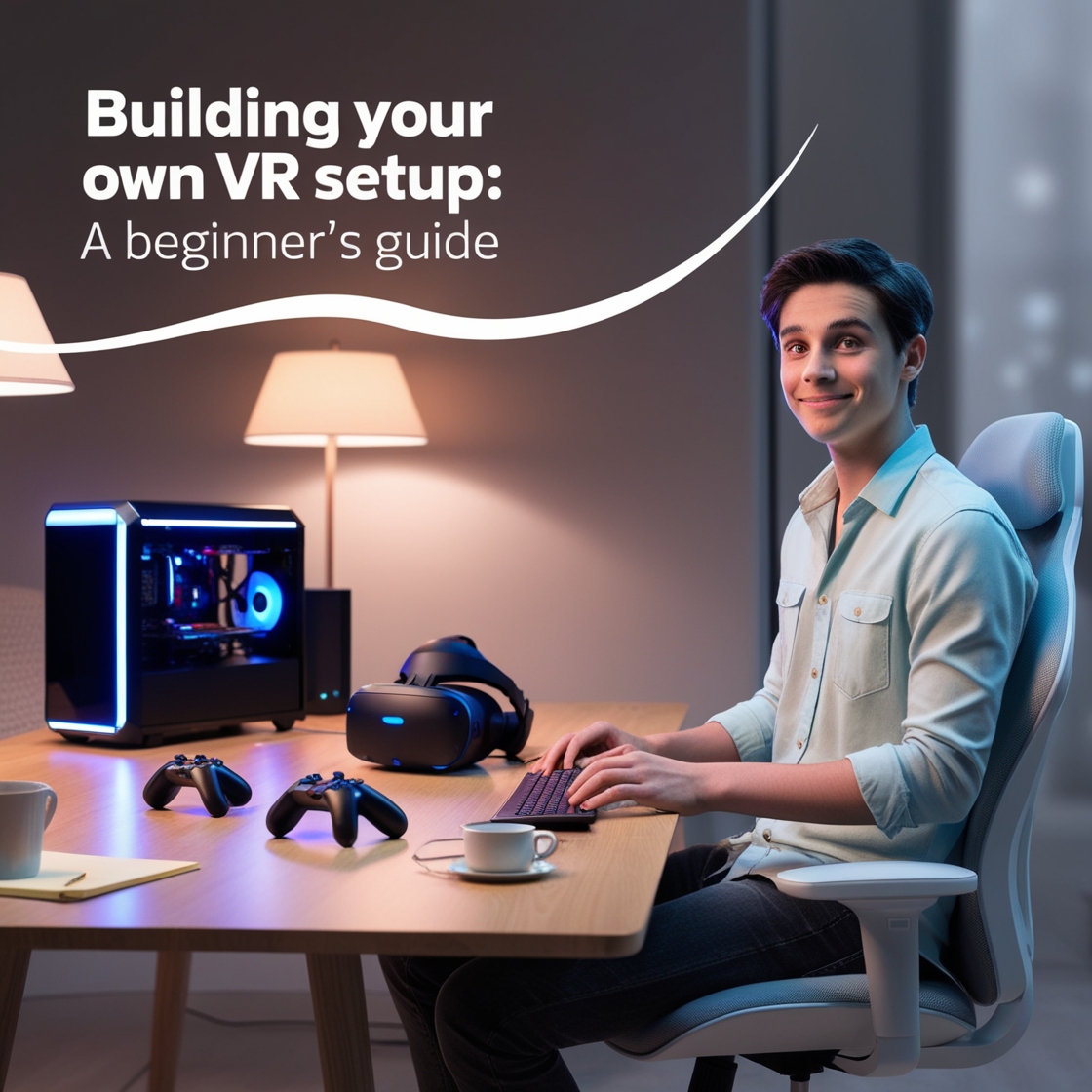Introduction to Building Your Own VR Setup
Virtual reality (VR) is more than just a buzzword—it’s an immersive technology that allows you to step into a whole new world. But why settle for a pre-built system when you can customize your own? Whether you’re a gamer, a tech enthusiast, or someone simply curious about VR, building your own setup can be a rewarding and enjoyable experience. Not only do you get to pick the best components for your needs, but you’ll also understand how everything works together. Ready to dive into the VR world? Let’s get started!
Essential Components for a VR Setup
Headset Selection
Your VR headset is the most crucial component of your setup. Think of it as the window to the virtual world. There are various types of headsets available, and choosing the right one depends on your preferences and budget.
Wired vs. Wireless Headsets
Wired headsets typically offer higher-quality visuals, but they come with the inconvenience of cables. On the other hand, wireless headsets provide freedom of movement but may compromise slightly on display quality or latency. Which is better? It boils down to what matters more to you—immersion or convenience.
Top VR Headsets on the Market
Popular VR headsets include the Oculus Quest 2, HTC Vive, and PlayStation VR. The Oculus Quest 2 is known for its affordability and wireless features, while the HTC Vive offers top-notch visuals. PlayStation VR is a great option if you’re already invested in the PlayStation ecosystem.
PC or Console: What’s the Right Choice?
Minimum PC Requirements for VR
If you choose to go the PC route, your computer must meet specific requirements. Typically, you’ll need a powerful GPU, such as the NVIDIA RTX series, at least 8GB of RAM, and a solid processor (think Intel i5 or better). Most VR platforms, like SteamVR, provide tools to test if your PC can handle VR.
Console Compatibility with VR
For those who prefer consoles, PlayStation VR offers a seamless way to dive into virtual reality. It’s simple to set up, but you’re limited to PlayStation games and experiences. Xbox doesn’t currently support VR natively, so if you’re a console gamer looking for VR, PlayStation is your best bet.
VR Controllers and Accessories
Types of VR Controllers
Controllers are your hands in the virtual world, allowing you to interact with objects and navigate your environment. Most VR systems come with their own specialized controllers, like the Oculus Touch or the Vive Wands. These devices track your movements and make the experience much more immersive.
Additional Accessories for a Complete Experience
Other accessories, like motion trackers, hand-tracking gloves, and high-quality headphones, can enhance your VR experience. Some users even add external sensors to improve tracking accuracy in larger spaces.
Setting Up Your VR Space
Room Scale VR Setup
If you plan to move around in VR, you’ll need a dedicated area known as a room-scale setup. This setup allows you to walk freely within the virtual environment, making the experience more immersive. Ensure you have enough space—at least 6 feet by 6 feet is recommended.
Best Practices for a Safe VR Environment
Cable Management
Nobody wants to trip over cables during an intense VR session. If you’re using a wired headset, invest in cable management solutions like ceiling-mounted pulley systems to keep the area clear.
Lighting and Space Optimization
VR tracking systems rely on good lighting to function correctly, especially if you’re using external sensors. Make sure your play area is well-lit but not too bright, as this could interfere with tracking.
Installing and Configuring Your VR Software
Setting Up VR Software on PC
Once you have your hardware ready, it’s time to install the necessary software. For PC users, platforms like SteamVR or Oculus Home are the go-to options. Installation is straightforward, and these platforms will guide you through the setup process.
Console VR Software Installation
If you’re using a console like PlayStation, installing the VR software is even easier. Simply follow the instructions provided with the PlayStation VR system, and you’ll be up and running in no time.
Calibration and Testing of VR Systems
Calibration is a crucial step that ensures everything works smoothly. Take time to configure your headset, controllers, and sensors. Make sure to test the system in a variety of apps to fine-tune the experience.
Optimizing Performance for Your VR Setup
PC Settings for Optimal VR Experience
To get the best performance, adjust your PC’s graphics settings. Lowering the resolution can help if you experience lag, but try to maintain a balance to keep the visuals immersive.
Internet Connection and Multiplayer VR
For multiplayer games, a stable internet connection is vital. Lag or delays can ruin your experience, so ensure your connection is strong before diving into multiplayer VR worlds.
Troubleshooting Common Issues
From headset tracking problems to controller syncing issues, you might run into a few bumps along the way. Luckily, most problems have simple fixes—recalibrate your headset, update your software, or restart your system.
Best VR Games and Experiences for Beginners
Top Free VR Games
If you’re just getting started, you don’t have to splurge on games. Titles like Rec Room and VRChat offer plenty of fun without costing a penny.
Paid VR Games Worth Trying
For those looking to invest, Beat Saber and Half-Life: Alyx are must-try games that show the full potential of VR.
Educational and Simulation VR Experiences
VR isn’t just for gaming. Platforms like Google Earth VR and Tilt Brush offer educational and creative experiences that are great for beginners.
Conclusion: Enjoying Your Customized VR Setup
Building your own VR setup can seem daunting at first, but it’s an exciting journey. By selecting the right components, setting up a dedicated VR space, and optimizing performance, you’ll soon be diving into virtual worlds like a pro. Whether for gaming, education, or just exploration, a custom VR setup offers endless possibilities. Enjoy the ride!
